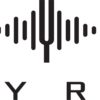“The world of reality has its limits; the world of imagination is boundless.” — Jean-Jacques Rousseau
Over the last two years or so, Henry King, innovation and transformation at Salesforce and my colleague and co-author, and I have been investigating and reporting on a model for business success that has eluded the spotlight until now but is beginning to emerge into the mainstream. It contrasts traditional or conventional ways of managing a company’s various resources (data, product, money, employees, customers, etc.) with new ones that we have seen gradually emerging over at least a decade. The primary driver of change during this period has been and continues to be, the evolution of our digital technologies and the new opportunities they bring to those able to perceive and assimilate them, as well of course as the new challenges they bring to those who aren’t. The gulf between opportunity and challenge, between success and failure, was made manifest by the COVID-19 pandemic which quickly became the accelerant of digital adoption at least for the connection between businesses and their customers and employees in a digital-first, work from anywhere — in fact do anything from anywhere — world.
The Boundless Company is the logical evolution of the Connected Company for the digital-first, decentralized-everything world.
We have been using the word “flow” as an umbrella term for this new model and have identified seven core design principles that characterize it and that organizations of all sizes and across all industries can use to design their own future success. As we have continued our exploration, we have become increasingly aware of the changing “shape” of companies, of what they need to look like in the new world of business ecosystems, of remote and autonomous workforces, and globally connected customers. And as we have looked for ways to describe the company of the future, at least from an organizational and resource management perspective, we have come to the realization that “flow” doesn’t quite work in the way that we want it to.
Flow is important because it emphasizes the need for companies to put their resources in motion rather than accumulating and controlling them, but it misses two of the most important features of digital technologies, namely the ability of everything to be connected to everything else, and the ability of everything to have intelligence and self-determination, otherwise known as autonomy. And finally, it misses the other key feature of the connected world, namely the economy of abundance, especially the abundance of ideas, of innovation and creativity, and the abundance of energy that it generates. We recognize that optimal flow is how companies and organizations can position themselves to deliver value at the speed of stakeholder needs. Optimal flow can also lead to unexpected outcomes with respect to growth, scale, reach, and ultimately relevance.
After months of searching for alternatives, we finally lighted upon a word that we think perfectly encapsulates this new model for business success, and so we are excited to introduce the Boundless Company, the logical evolution of the Connected Company for the digital-first, decentralized-everything world. In this new world, successful companies need to be boundless in several ways:
Boundless accessibility and reach
They need to be boundless in their energy and their enthusiasm for the success of their customers, their employees, their partners, and their communities. They need to be boundless in their ability to transcend the physical limits of their office spaces and to become effective orchestrators of their remote, distributed workforce and other resources. As we have already discussed, the office has traditionally provided a clear sense of belonging, a demarcation line between those who are part of the company and those who are not. And it also provided a clear sense of hierarchy, between those that inhabit cubicles and those with private offices, between those on lower floors and those on high. Nowadays, with a remote workforce, companies need new ways to engender belonging, based more on purpose and values-based inclusion than on location-based exclusion, and to drive towards desired outcomes more by mission-based orchestration than by control-based supervision. The future of work will be a hybrid model that is less and less location and time-dependent. The next normal is about working from anywhere and everywhere. The line-of-business internal boundaries and the expanded external touchpoints will vastly grow in a hyper-connected, mobile, and social knowledge-sharing economy.
A boundless ecosystem
They also need to be boundless in terms of looking and acting more like networks than hierarchies, with different growth and scaling properties. Networks gain their resilience from the number of nodes and the strength of the connections between them, not from the size and strength of centers or owners. Networks have identities but collective ones. In addition, companies need to start working more closely with their business ecosystems in order to create systemic, innovative solutions to meet their customers’ current and future needs. A boundless ecosystem will consist of orchestration and connectivity between platforms and ecosystems. As companies mature with their digital business transformation, orchestration will evolve to value co-creation through the choreography of value-added services, where speed, personalization, and intelligence shape value propositions and real differentiation.
They also need to be boundless in terms of their awareness. Companies need to be situationally aware, sensitive, and responsive to changing conditions and customer needs. And more than that, their ability to sense and respond must be fast, frictionless, and continuous. This added contextual intelligence, delivered through automation and data-driven processes, will improve decision and execution velocity. The benefit of eliminating blind spots will lead to improved employee and customer experience and business outcomes.
But even situational awareness by itself is no longer enough. Today’s company needs to be horizontally aware as well. Horizontal awareness means being connected to the larger world beyond the immediate here and now. Companies need to be able to see “further down the road” in exactly the same way that an autonomous car can be aware of conditions anywhere along its journey and can take active steps to anticipate and avoid problems, all because of its global as well as local connectedness.
2020 will vastly accelerate adoption of:
1 e-commerce
2 drone delivery
3 digital contactless payments
4 video conferencing
5 autonomous vehicles
6 wearable health monitors
7 3D manufacturing
8 voice mobile applications
9 online learning
10 smart robotics https://t.co/dpYoU6j3C8 pic.twitter.com/CgBghA9AgK— Vala Afshar (@ValaAfshar) March 20, 2020
Boundless growth, scale, and holistic success
And companies also need to be boundless in terms of their scalability. They need new ways to manage their resources, as we’ve intuited all along. And they need to learn to manage technology resources, meaning AI, robots, smart devices of all types, as co-workers with their human counterparts.
This then is the Boundless paradigm: A business model designed to achieve Holistic Success, realized by resources who are individually empowered to be Autonomous, Connected, and Mobile, and who are collectively organized to be Integrated, Distributed, and Continuous.
“Let there be no scales to weigh your un-known treasure; And seek not the depths of your knowledge with staff or sounding line. For self is a sea boundless and measureless.” — Kahlil Gibran
Boundless organizations are boundless in their size, shape, and reach. They transcend the limits of the physical space. They transcend the local and the immediate. And they transcend hierarchy. They have identity without exclusion, individuality without skin or borders. They are boundless in space and time. In our next article, we will lay out this model and show how all companies can start to design their future success and become Boundless.
This article was co-authored by Henry King, a business innovation and transformation strategy leader at Salesforce. Henry King is an innovation and transformation leader at Salesforce and author of Flow Design, a new design paradigm for organizations and experiences based on the principles of movement and connections. King is a former CIO with 30 years of consulting and executive experience, both in the US and internationally, with expertise in innovation, design thinking, and information technology. King also teaches innovation and design topics at the School of the Art Institute of Chicago and the Institute of Design.



